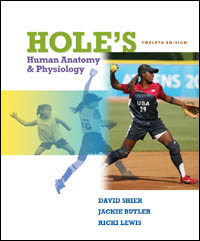
Hole's Human Anatomy & Physiology (Shier), 12th EditionChapter 24: Genetics and GenomicsLearning Outcomes24.1 Introduction1 Distinguish among genome, gene, and chromosome 2 Define genetics. 3 Explain how the human genome is an economical storehouse of information. 4 Explain how the environment influences how genes are expressed. 24.2 Modes of Inheritance 5 Describe a karyotype, and explain what it represents. 6 Explain the basis of multiple alleles of a gene. 7 Distinguish between heterozygous and homozygous; genotype and phenotype; dominant and recessive. 8 Distinguish between autosomal recessive and autosomal dominant inheritance. 24.3 Factors That Affect Expression of Single Genes 9 Explain how and why the same genotype can have different phenotypes among individuals. 24.4 Multifactorial Traits 10 Describe and give examples of how traits may be determined by genes and the environment. 24.5 Matters of Sex 11 Describe how and when sex is determined. 12 Explain how X-linked inheritance differs from inheritance of autosomal traits. 13 Discuss factors that affect how phenotypes may differ between the sexes. 24.6 Chromosome Disorders 14 Describe three ways that chromosomes can be abnormal. 15 Explain how prenatal tests provide information about chromosomes. 24.7 Gene Expression Explains Aspects of Anatomy and Physiology 16 Describe the type of information gene expression profiling provides. 17 Explain how a DNA microarray works. |  |















